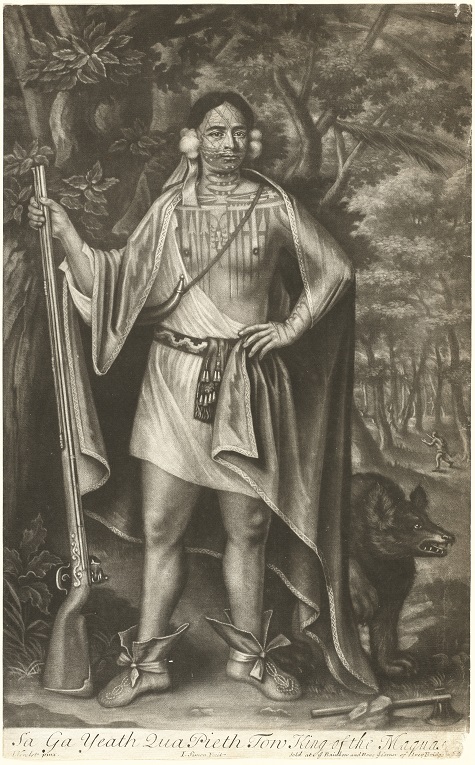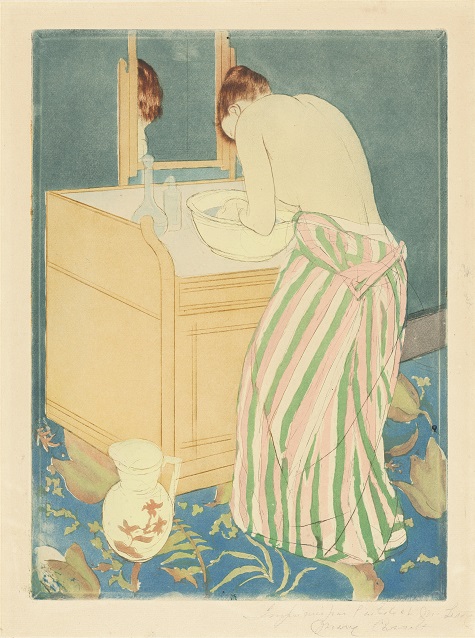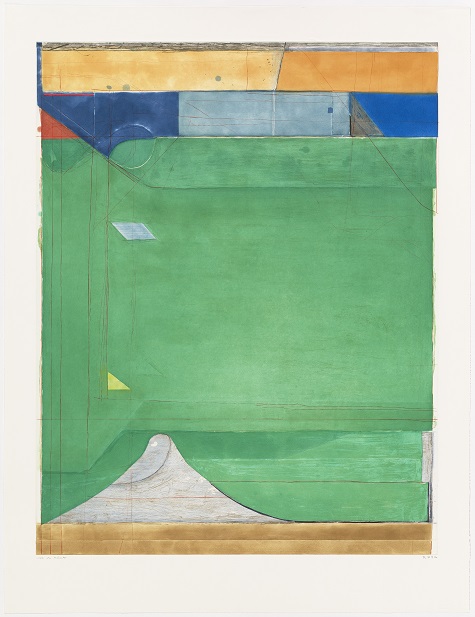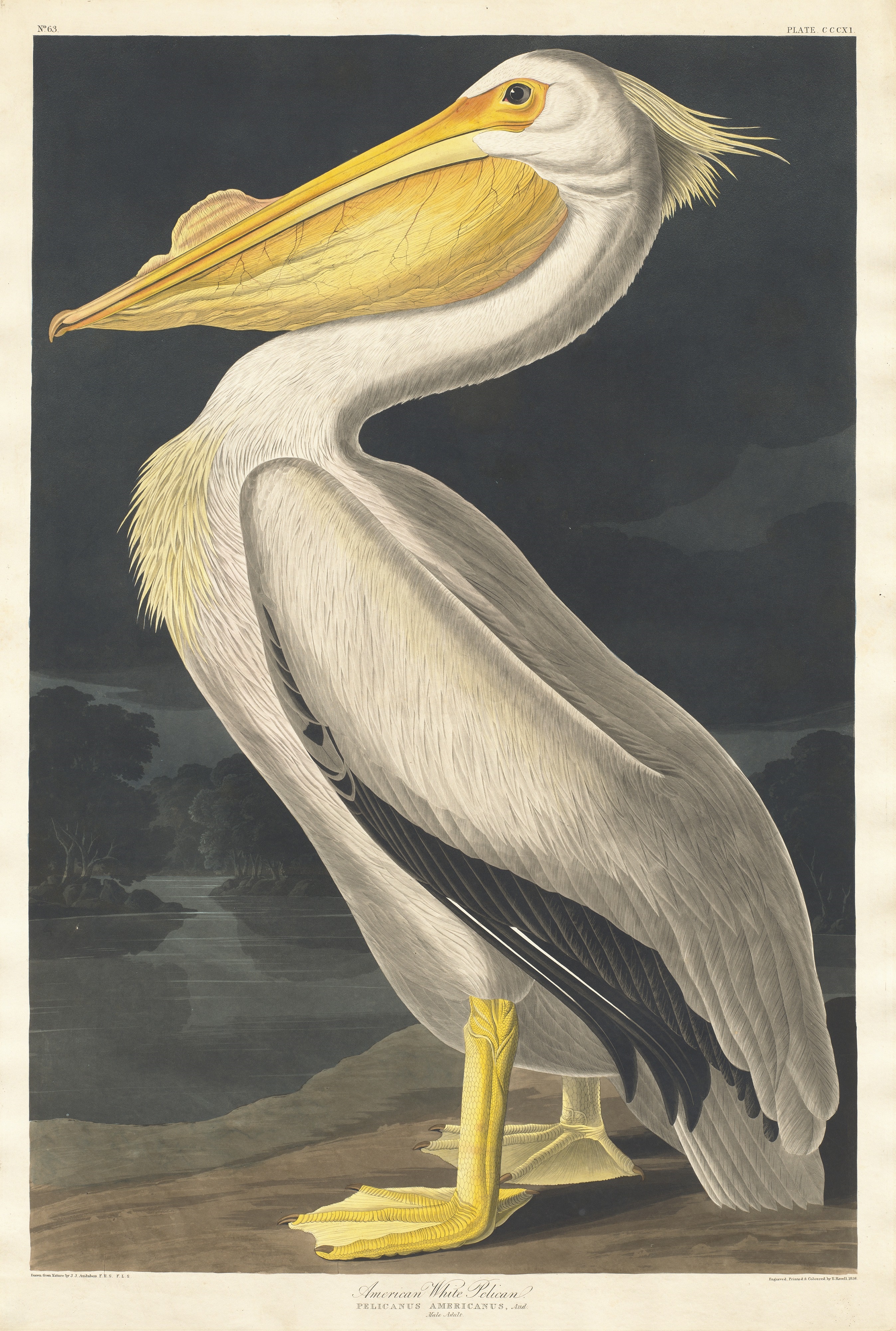Industrious civilians, corrupt politicians, taxonomies from the frontier, fame and infamy; all have been and continue to be depicted in the American print. This democratic nature of printmaking’s subjects has often drifted into the processes themselves. For example, Paul Revere’s contributions to print greatly surpassed those of a simple image-maker. He also industrialized copper plate manufacturing thereby giving a much larger group of artists access to the technology.
- Frances Flora Palmer, A Midnight Race on the Mississippi, 1860, color lithograph with hand-coloring, National Gallery of Art, Washington, Donald and Nancy deLaski Fund
- John Simon after John Verelst, Sa Ga Yeath Qua Pieth Tow, King of the Maquas, after 1710, mezzotint, National Gallery of Art, Washington, Paul Mellon Fund
- Mary Cassatt, Woman Bathing, 1890–91, drypoint and aquatint, National Gallery of Art, Washington, Gift of Mrs. Lessing J. Rosenwald
- Richard Diebenkorn, Green, 1986, spitbite aquatint, soapground aquatint, and drypoint, National Gallery of Art, Washington, Eugene L. and Marie-Louise Garbaty Fund and Patrons’ Permanent Fund, © The Richard Diebenkorn Foundation
- Robert Havell Jr., after John James Audubon, American White Pelican, from The Birds of America, 1836, hand-colored etching and aquatint, National Gallery of Art, Washington, Gift of Mrs. Walter B. James
Print has often transferred its technologies from the forefront of industrialization into the realm of fine art as processes advance. As digital printing becomes cheaper, faster, and more accessible it pushes out more antiquated technologies, and then those technologies are turned by artists towards fine art applications.
Print has often simultaneously bucked and embraced its utilitarian roots. This can be seen in Robert Rauschenberg’s attempts to push print processes far past their traditional capabilities into almost another medium entirely. His monolith in black Accident occupies a space between print, drawing, and collage. Rauschenberg’s method was a precursor to the current and common practice of reassembling proofs and ephemera. This method of repurposing material that was once considered worthless allows contemporary print artists to complete individual works of art where print is the language and repetition is no longer a factor. The prints also give a much larger audience access to his work. They can easily travel, be shown in multiple locations at the same time. It can even be argued that they offer a wider conceptual accessibility than his paintings and assemblages simply through the widely understood aesthetic properties of paper and ink.
Whereas other mediums have been more subject to the wills of those with means, print has catered to a wholly different crowd, often the same one depicted in its imagery. Bellows’ lithograph, A Stag at Sharkey’s, invited wide audiences of the day into a seedier closed realm outside their normal comfort zone to witness a less accessible form of entertainment, illegal prize fighting. One could argue that the original spirit of dissemination represented by the Gutenberg press continues to spring forth from online mediums such as YouTube, which has become a university for the everyman. In addition to representing the most current philosophies and aesthetic possibilities in contemporary art, print is unique in its unfiltered articulation of whatever artistic expressions are evident in the culture at large.
Portions of this article appeared in the Spring/Summer 2017 issue of the DMA Member Magazine Artifacts.
Steven Foutch is an artist and assistant professor of painting and printmaking at University of Dallas




